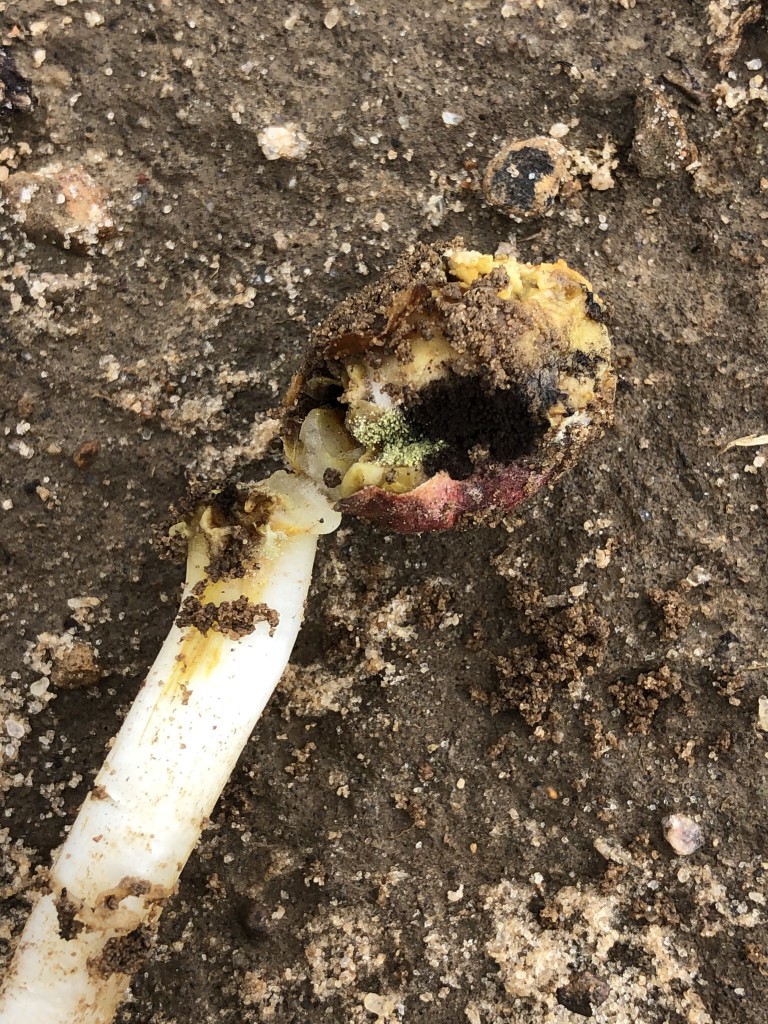Corn
Some of our earliest corn is at R1 (silking) stage and we have a lot approaching tassel as well. I have been looking for a few things in particular while walking fields: 1) foliar pathogens such as northern corn leaf blight and definitely southern rust and 2) stink bugs. So far, no southern rust has been reported in the state, but we are expecting it anytime. Until we do find it, I am not going to push anyone to make a fungicide application. However, it is always a good idea to be on the safe side and make preventative sprays. I will update as soon as we find southern rust. As for NCLB, it has been found by a local crop consultant and myself in some of the oldest corn in Bleckley County. It is not widespread, and I am not recommending a fungicide spray at the moment but we will continue to monitor. This particular field is corn behind corn which increases risk for NCLB. Each field is different and different management may be required based on conditions. If it were found widespread in a field, and it were at tassel or say V8-V10 stage, we would probably spray. Generally, the same fungicides are used to combat southern rust and NCLB. As for stink bugs, I have seen very little, but they will likely be more of an issue in later planted corn. Here are some comments from UGA Grain Agronomist Corey Bryant:
The critical period for stink bug control is during the ear formation period, approximately V12 – VT. Stink bug feeding on developing ears will cause them to emerge deformed and not develop properly or completely fail. If damaged ears do develop they may also be more susceptible to disease. Once the ear has emerged and begun silking, feeding damage on the ear is limited to the individual kernel. This is not to say that we should stop scouting but that feeding damage will not injure the entire ear at this point. The only way to identify stink bug infestations is through timely and proper scouting. Current thresholds are 1 stink bug per 4 plants during the ear elongation/vegetative tasseling stage, and 1 stink bug per 2 plants during the silking/pollination and blister growth stages, R1 – R2.


Peanuts
The biggest story this year so far has been peanut seed quality and our ability to get an acceptable stand. We were concerned going into this year’s planting season about peanut seed quality, and it looks like those suspicions were correct. Generally we would want a final stand of at least 4 seed per foot to maximize yield and reduce TSWV, but I am seeing a lot of fields this year in that 2.5-3 per foot range. Each field is different and under different circumstances, but as late as we are getting in this planting season, on most fields a final stand of at least 2.5 plants per foot will not need to be replanted. However, anything less than 3 per foot needs to be evaluated. Obviously this is not ideal, but we risk losing yield due to a later planting date if we replant, and we still are not guaranteed that we will get a better stand. So far, there has been no pattern to “bad” seed as to a certain company or dealer’s seed. It has been widespread and seems to come down to individual lot numbers. I am still hopeful that more seedlings will continue to crack the surface, which is what I am seeing with fields that have been planted nearly 3 weeks. The following are some pictures that I have taken from peanut fields this week.


